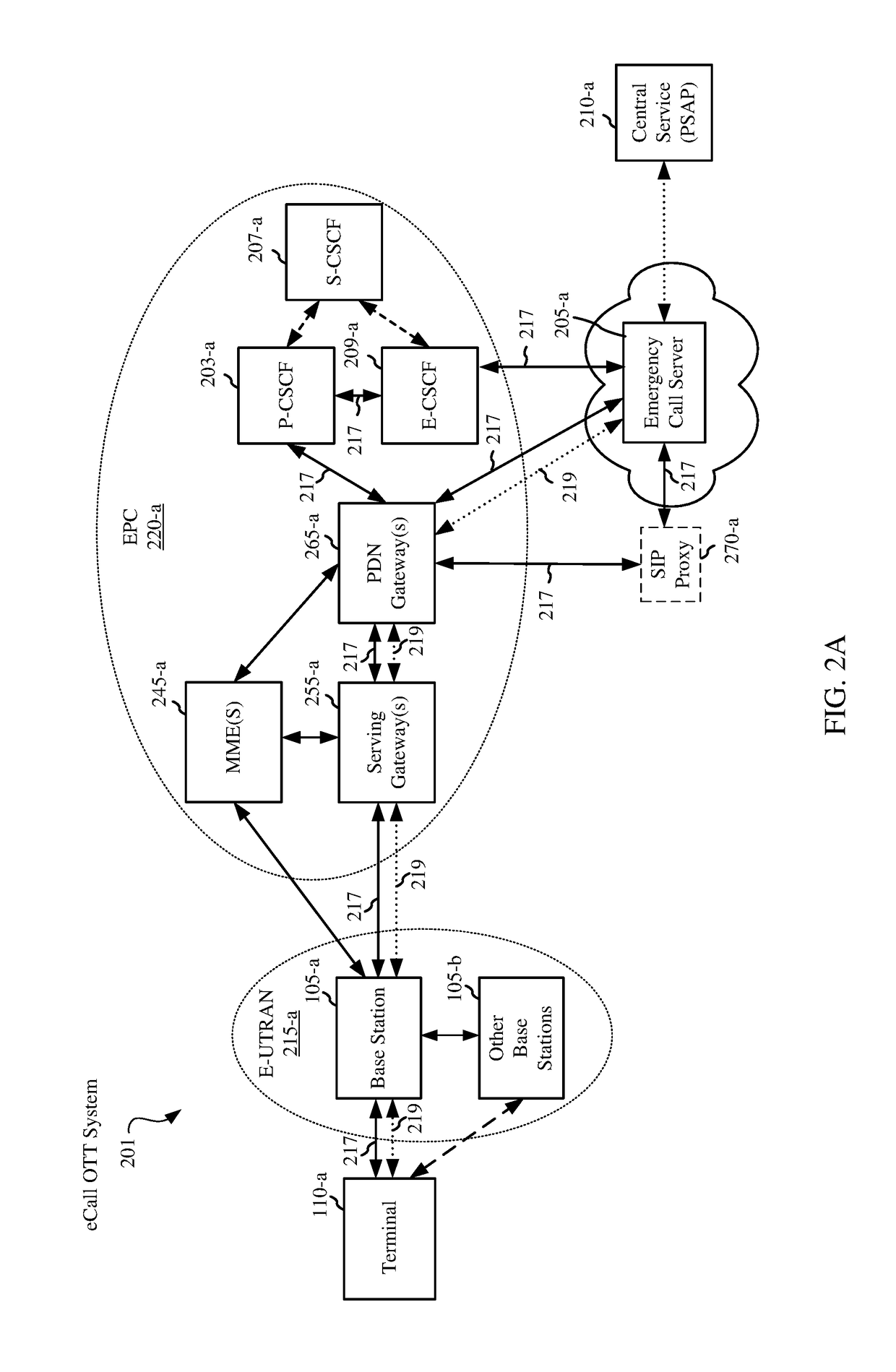Techniques to support emergency calls with over-the-top service provider
a technology of emergency call and over-the-top service provider, applied in the field of wireless communication, can solve problems such as delayed emergency respons
- Summary
- Abstract
- Description
- Claims
- Application Information
AI Technical Summary
Benefits of technology
Problems solved by technology
Method used
Image
Examples
Embodiment Construction
[0074]The described features generally relate to improved systems, methods, or apparatuses for emergency call calls using an Over-the-Top (OTT) service provider (SP). In some cases, a telematics wireless communication system may be used to place emergency vehicle calls (eCalls) (e.g., when a vehicle experiences a crash). For instance, an in-vehicle system (IVS) may be used to send telematics data to a public safety answering point (PSAP), such as a dispatch responder. During an emergency call, a single connection between an IVS and a PSAP may carry both voice and data related to a crash. According to the present disclosure, in some communication environments, the emergency call may be relayed by a third party (e.g., a national automotive club such as the China Automobile Association (CAA) in China), which may act as an intermediary between the IVS and the PSAP. The format of the data and contents conveyed by an emergency call may be standardized such that an IVS may place a recogniz...
PUM
 Login to View More
Login to View More Abstract
Description
Claims
Application Information
 Login to View More
Login to View More - R&D
- Intellectual Property
- Life Sciences
- Materials
- Tech Scout
- Unparalleled Data Quality
- Higher Quality Content
- 60% Fewer Hallucinations
Browse by: Latest US Patents, China's latest patents, Technical Efficacy Thesaurus, Application Domain, Technology Topic, Popular Technical Reports.
© 2025 PatSnap. All rights reserved.Legal|Privacy policy|Modern Slavery Act Transparency Statement|Sitemap|About US| Contact US: help@patsnap.com



